We can’t send you updates from Justia Onward without your email.
Unsubscribe at any time.
The U.S. Supreme Court profoundly influences our society. To many, it is both familiar and opaque. In this post, we're exploring the newly redesigned Justia U.S. Supreme Court Center, a free resource shedding light on the highest tribunal in the nation.
For over 230 years, the U.S. Supreme Court has played a key role in shaping American life. The Court has defined the scope of individual liberties under the Constitution, determined the limits of government power, and interpreted federal laws in areas such as employment, immigration, and the environment. Justia believes that the general public should have free, efficient access to Supreme Court decisions and related resources. To this end, we have long provided a Justia U.S. Supreme Court Center. We recently updated this section of our portal with a more user-friendly design and more detailed content.
Our archive of Supreme Court decisions extends back from the present day to the first decision issued by the Court in 1791. Visitors to the Justia U.S. Supreme Court Center can browse the archive by date or by topic. We also provide a table of contents of the volumes in the U.S. Reports, allowing people to find cases this way as well. In addition to the text of each opinion in a case, visitors can find materials that illuminate the context of the case. Depending on the case, these may include annotations or summaries, briefs filed by the parties to the case, audio of oral arguments before the Justices, and more.
Landmark U.S. Supreme Court Cases
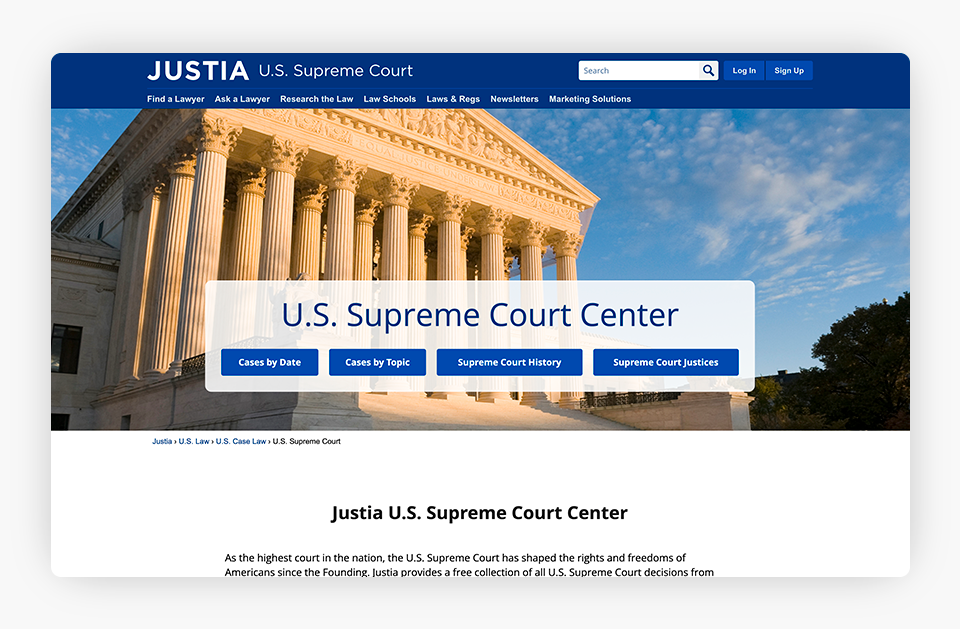
While all Supreme Court cases are important, some cases resonate with particular force. Our team has selected especially significant cases in 27 areas, which are listed prominently on the home page of the center:
- Abortion & Reproductive Rights
- Antitrust
- Climate Change & Environment
- Copyrights
- Criminal Trials & Prosecutions
- Death Penalty & Criminal Sentencing
- Due Process
- Equal Protection
- Free Speech
- Government Agencies
- Gun Rights
- Health Care
- Immigration & National Security
- Labor & Employment
- Lawsuits & Legal Procedures
- LGBTQ Rights
- Miranda Rights
- Patents
- Powers of Congress
- Property Rights & Land Use
- Religion
- Role of Courts
- Search & Seizure
- Separation of Powers
- Taxes
- Trademarks
- Voting & Elections
A visitor to one of these pages will find a brief introduction summarizing the law on the topic, as articulated by the Supreme Court. Then, they will find a list of landmark cases addressing the topic with links to the free text of each case and an important quote or takeaway from the case. Visitors thus can understand not only the current state of the law but also how it has evolved over time.
Recent U.S. Supreme Court Decisions
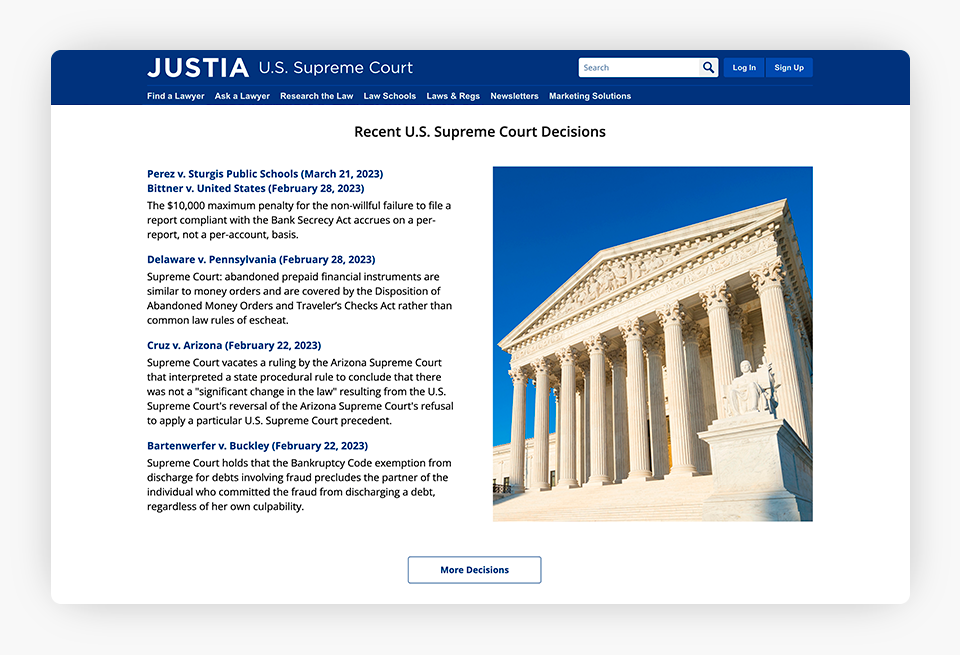
Our team regularly updates the Justia U.S. Supreme Court Center with the newest decisions issued by the Court. In a panel on the home page below the landmark cases, visitors can find the five most recent decisions. Each case comes with a synopsis of its main holding and a link to its free text. By clicking on the link, a visitor also will find materials related to the case, such as oral arguments and briefs and other filings. This allows visitors to find out about the Court’s latest activities and quickly access cases that they may have seen in the news. By reading a case or exploring its supplementary materials, they can develop a stronger understanding of its meaning and impact.
U.S. Supreme Court Resources
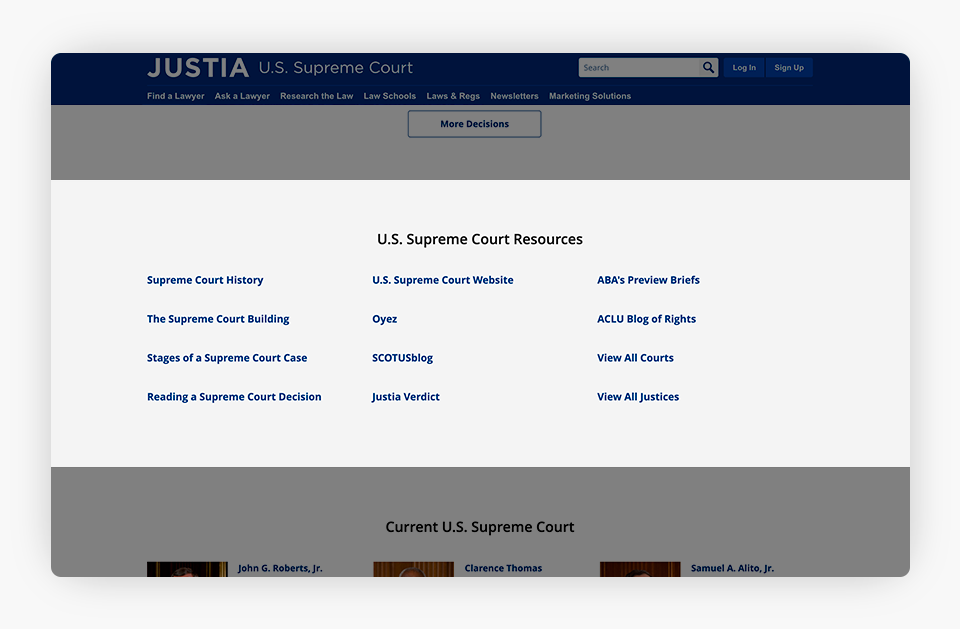
Many people have a basic understanding of what the Supreme Court is and what it does, but they may not know all the details of how the Court operates. Among other general resources, we provide a description of the stages of a Supreme Court case, starting with the writ of certiorari and continuing through briefs and oral arguments to the conference of Justices, voting on the case, and the process of writing opinions. We also offer a guide to reading a Supreme Court decision. This describes the significance of the “syllabus” at the start of the case, while explaining what each type of opinion means and providing examples from famous cases. For example, visitors may want to understand the difference between a majority opinion and a plurality opinion, which can affect the precedential significance of a case.
We also provide a description of the U.S. Supreme Court Building in Washington, D.C. and links to several external resources, such as the official Supreme Court website, our Verdict blog, and free law project Oyez, which we operate in conjunction with academic partners.
Current U.S. Supreme Court
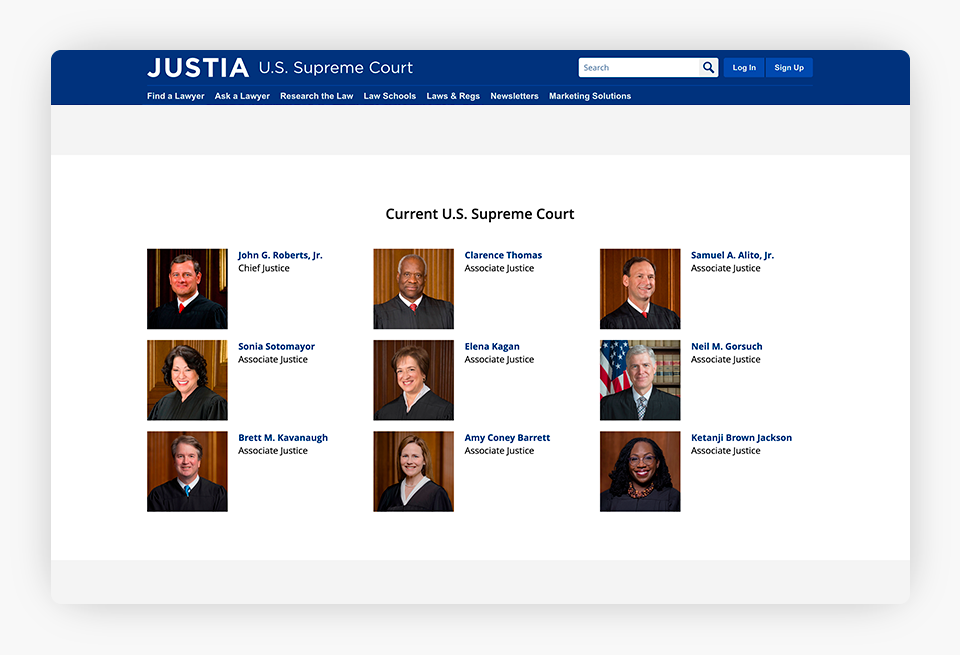
Further down the Justia U.S. Supreme Court Center home page, visitors can find a panel on the Current U.S. Supreme Court. This features each of the nine Justices who sit on the Court today. By clicking on a Justice, a visitor can read about their background, such as their education, their career before the Court, and their path through the confirmation process. Each Justice profile also briefly discusses their ideology and their views on some key issues.
U.S. Supreme Court History
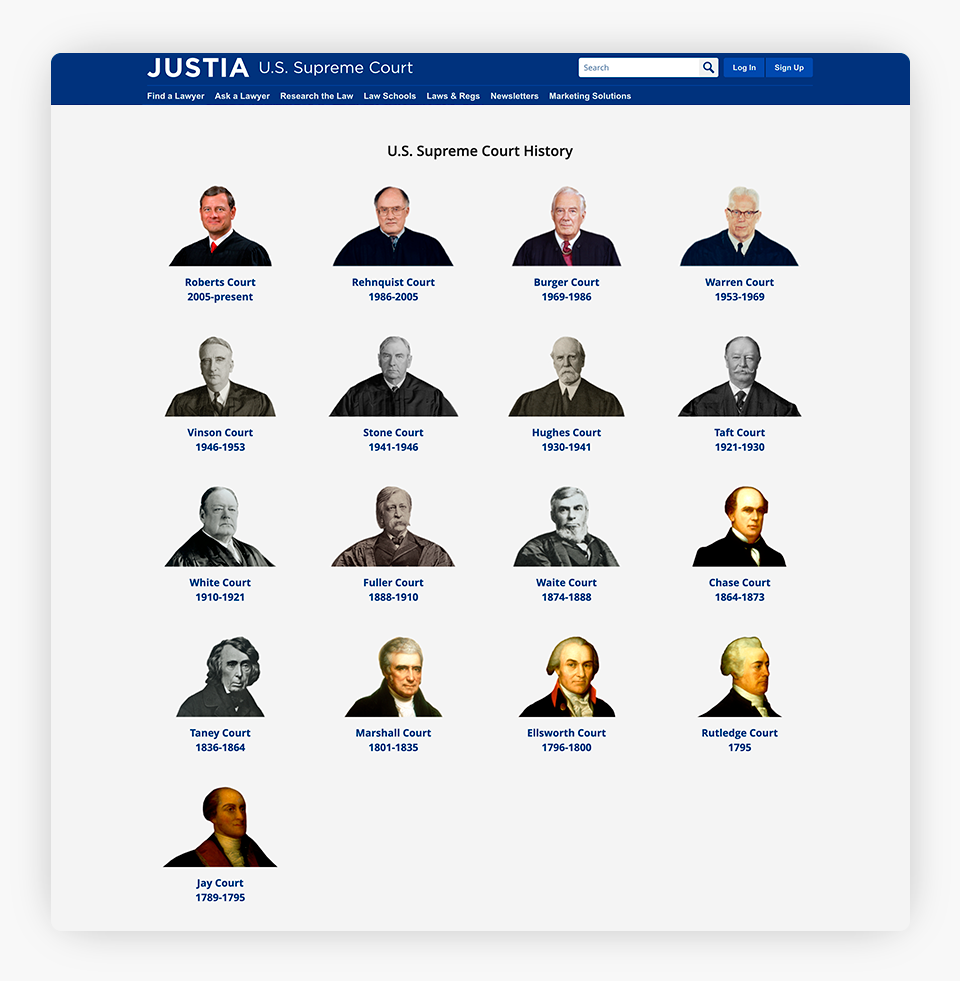
Finally, a section on U.S. Supreme Court History provides visitors with an overview of each era of the Court, dating back to its founding in 1789. Eras of Supreme Court history are generally defined by Chief Justice. John Roberts, the current Chief Justice, is the 17th person to hold that position. The longest-serving Chief Justice so far was John Marshall, who held that position from 1801-1835. Each overview of an era of the Court explains how its membership changed during that time and describes some of its main contributions to the law, as well as any role that the Court or individual Justices may have played in major historical events. Visitors also can find a list of the Associate Justices who served with that Chief Justice and a cluster of significant decisions produced during that era.
Elsewhere in the Justia U.S. Supreme Court Center, we have provided an overview of how the process of becoming a Supreme Court Justice works. This page also contains a full list of all the Justices who served on the Court of each Chief Justice.
Final Thoughts
The U.S. Supreme Court is a constant topic of public debate. It may be revered or reviled, but it is not always fully understood. By improving and expanding our Justia U.S. Supreme Court Center, Justia aims to illuminate both the current Court and its evolution as an institution. This area of our portal combines with other free resources to advance our goal of making the law transparent and accessible to all. We look forward to further improving the Justia U.S. Supreme Court Center over time.
Related Posts